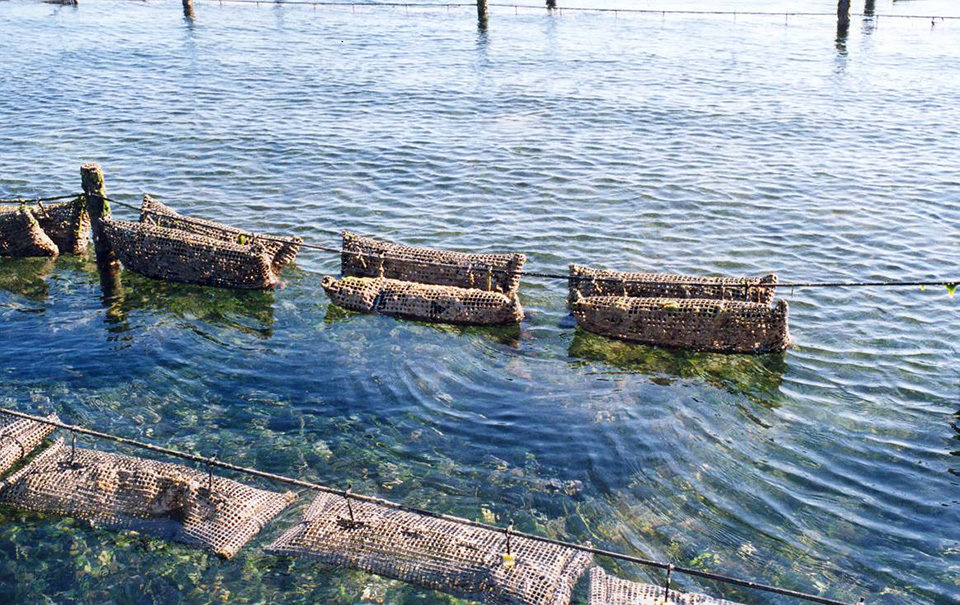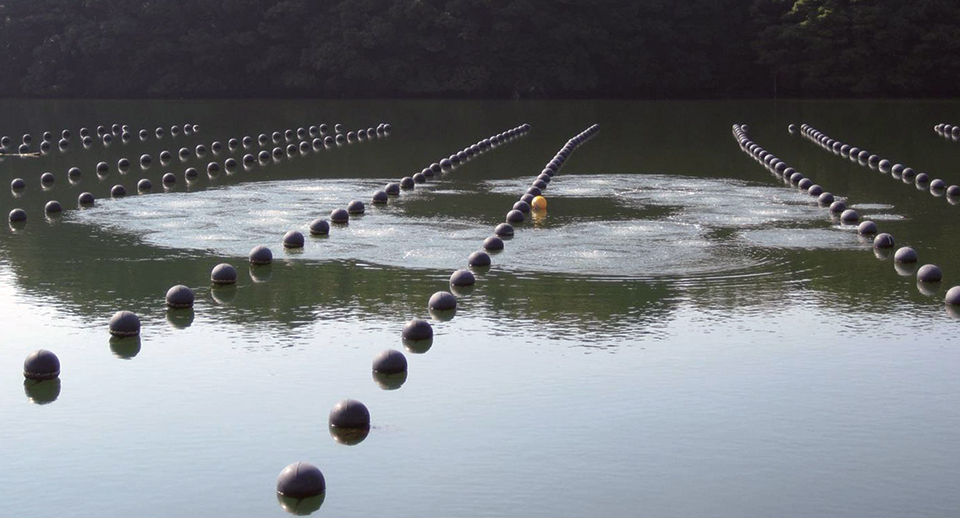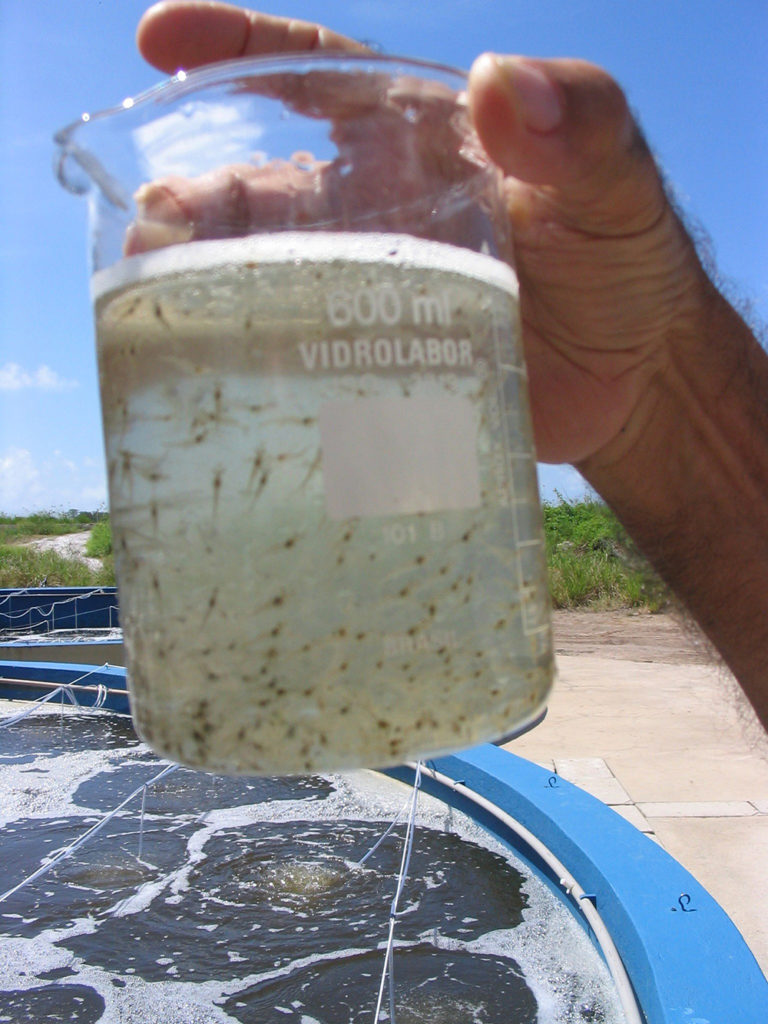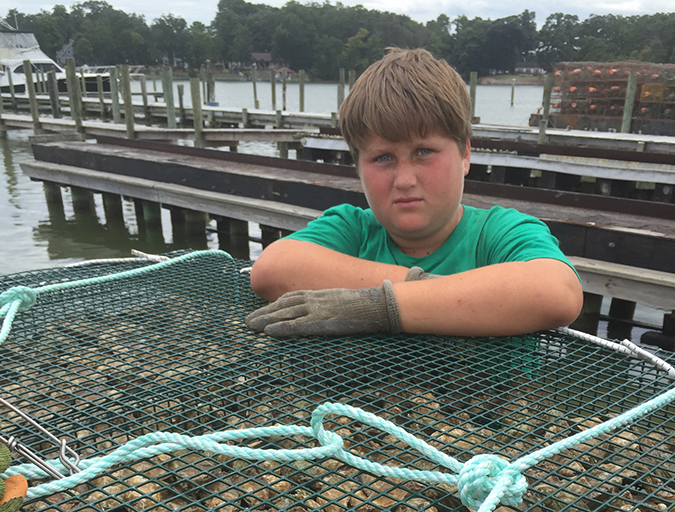Challenges between rising temperatures, spawning

As a favorite seafood, oysters have been increasingly cultured worldwide, especially in China, Japan, Korea, France, the United States, Taiwan and Australia. In 2008, about 4.7 million metric tons of oysters were produced worldwide.
Besides their valuable economic value, farmed oysters also clean the water, remove nitrogen, accelerate denitrification, enhance water clarity, promote eelgrass survival and provide excellent habitat for myriads of juvenile fish and crustaceans.
Although the oyster industry adjusts strategy frequently to meet market demands, it has to face impacts on marketing due to oysters’ spawning seasons. To overcome this dilemma, farmers have tried culture strategies such as raising alternative triploid populations or submerging oysters in deeper water to avoid spawning. Unfortunately, due to environmental and technical constraints, the spawning phenomenon is almost unavoidable.
Spawning events can trigger summer mortality because of the animals’ added energy output. Due to rising concerns associated with global warming, it is essential to consider the potential risk of unpredictable spawning phenomenon for future oyster aquaculture.
Cyclic spawning
Harvesting normally occurs prior to spawning, when oysters are in peak condition. The condition index of oysters significantly drops due to spawning, and the reduction takes at least one month to be remedied in the field with natural food. It is also believed that spawning can alter oyster flavor and texture. Therefore, oyster spawning is not a happy thing for marketers.
Oyster reproductive activities are cyclic and follow distinct seasonal or annual patterns. In temperate regions, oysters typically follow a seasonal reproductive cycle with periods of gonad maturation in late spring and spawning in summer, when elevated temperatures trigger the spawning activity.
Rising temperatures
A model generated by Australia’s Commonwealth Scientific and Research Organization projects that the waters around Australia will warm one to two degrees-C by 2070, with the greatest warming in southeastern Australia, where most oyster farming occurs. A recent heat wave with temperatures over 45 degrees-C during the Australian Open tennis tournament in Melbourne not only affected human health, but potentially adversely impacted oyster aquaculture due to the sudden jump in temperature.
In South Australia, heat stress occurs during summer, when intertidal organisms can be exposed to air temperatures in excess of 45 degrees-C for over 24 hours during low dodge tides. Similar high temperatures are also reported in Puget Sound in Washington, USA. These extremes in temperature are likely to become more frequent as a result of global warming.
This situation becomes more critical if a species is located in shallow waters where the temperature significantly increases. Unfortunately, current farming methods can expose oysters to extreme environmental fluctuations during cyclic periods of emersion and immersion.
Temperature responses
Temperature has long been recognized as a key environmental factor that influences all physiological processes in oysters. With elevated temperatures, oysters need to increase metabolism to ensure an adequate energy supply for survival. Beyond the thermal optimum, however, aerobic respiration may transition to anaerobic metabolism due to insufficient oxygen supply. If this process is incomplete or impossible, thermal tolerance is diminished and mortality can ensue.
In summer, oyster spawning is triggered by elevated temperature and associated with energy expenditure. The conflict of energy demand between thermal adaptability and spawning activity naturally leads to the question of whether thermotolerance in oysters is suppressed by spawning activity.
The author’s lab at Flinders University of South Australia in Adelaide found a temperature of 37 degrees-C significantly reduced oyster mortality after exposure to a second heat shock of 44 degrees-C, but in spawned oysters mortality remained at 80 percent, compared to less than 10 percent in pre-spawning oysters. Therefore, spawned oysters are highly vulnerable to temperature stress.
Disease problems
Since the mid-1970s, large-scale episodic events such as disease epidemics, mass mortalities and biological population explosions have occurred in marine environments with increasing frequency, intensity, variety and range. For example, in the U.S., Eastern oyster disease caused by Perkinsus marinus extended its range from Long Island, New York, to Maine during a winter warming trend in which the usual coldwater barrier to pathogen growth was removed.
As sessile bivalves living in the intertidal zone, oysters are frequently subjected to various pathogens and environmental stresses. Although oysters have developed physiological adaptations for survival, the impacts of spawning can suppress their immunocompetence and substantially compromise their ability to defend against parasites and pathogens. The author’s work with injection of V. harveyi bacterial extracellular products into oysters supported this concept by the 46 percent mortality observed in spawned compared to 28 percent in pre-spawning oysters.
Because oyster spawning occurs concurrently with increased water temperature, and warm water facilitates the growth of marine pathogens, it is urgent to investigate how climate change may influence pathogen-host interactions in the marine environment, especially during spawning season.
Food issues
The natural upwellings of nutrients from the ocean can assist in providing the right conditions for farmed oysters to flourish. However, due to global warming, this advantage may be altered inversely. For example, a decrease in zonal westerly winds would inhibit eastern Tasmanian upwelling, and a strengthening of the East Australia Current would limit impingement of nutrient-rich southern waters.
Consequently, food deprivation may become a challenge to oysters from time to time. Oysters can also encounter low food availability in the ocean due to heterogeneous distribution of seston particles at both spatial and temporal scales. Chlorophyll a can fluctuate eight-fold from summer to autumn in the same location. Even within a tidal cycle, both the quantity and quality of seston can vary as much as across seasons. But these fluctuations may be more frequent and extreme in the coming years.
Although spawned oysters need to recover and accumulate energy for thermal adaptation, they are still under stress during the recovery process, which particularly depends on food availability.
In the laboratory, spawned oysters were shown to retard energy recovery after experiencing a period of food shortage. Although a synergistic effect of food deprivation and spawning would not cause immediate mortality, the concurrent energetic and immunological dysfunctions could lead to mortality in spawned oysters when combined with other environmental stress.
Summer mortality
In recent decades, mass summer mortality in oyster aquaculture has become a widespread phenomenon. It has been estimated that 50 percent or more of the harvestable crop can be lost in a given year. The differing resistance of oyster strains to the mortality events has been studied for many years, although the mechanisms of the possible genetic components remain unknown.
The large-scale collaborative French Mortalites Estivales (MOREST) program was conducted to provide insight into the reasons for summer mortality, but different environmental conditions, aquaculture methods and genetic origins of broodstock complicate the understanding of the phenomenon. Although there are many reasons, the scientists concisely concluded that the summer mortality in Pacific oysters resulted from biotic and abiotic synergic processes related to critical stages in the life cycle of the species.
Due to the energy cost for gametogenesis, the reproductive season is always considered a risky period for summer mortality. In a pioneer study, different gametogenic stages were identified according to the reproductive state of gonad. Although it is not clear whether energy contributions differ at each stage, spawned oysters have been assumed to be in a fragile condition.
Recommendations
Although the post-spawning period falls outside the oyster-marketing season, husbandry management during this period is critical to reduce mortality. It is recommended that farmers reduce or avoid any human impacts to spawned oysters. Submerging oysters to deeper seawater could also reduce stress from exposure to high air temperature during low tide. Removing morbid and moribund individuals helps reduce fouling of the water and stops the spread of infection.
The impacts of the physico-chemical aspects of seawater in culture areas, as well as culture practices should also be taken into account. Food supplementation for spawned oysters should be considered if natural food availability is low during the recovery period, particularly in lean farming areas. At the same time, with concerns of escalating summer mortality in oysters, research on the vulnerability of oysters to climate change becomes more urgent.
(Editor’s Note: This article was originally published in the July/August 2009 print edition of the Global Aquaculture Advocate.)
Now that you've reached the end of the article ...
… please consider supporting GSA’s mission to advance responsible seafood practices through education, advocacy and third-party assurances. The Advocate aims to document the evolution of responsible seafood practices and share the expansive knowledge of our vast network of contributors.
By becoming a Global Seafood Alliance member, you’re ensuring that all of the pre-competitive work we do through member benefits, resources and events can continue. Individual membership costs just $50 a year.
Not a GSA member? Join us.
Author
-
Yan Li, Ph.D.
School of Biological Sciences
Flinders University of South Australia
GPO Box 2100
Adelaide 5001, S.A.
Australia[117,97,46,117,100,101,46,115,114,101,100,110,105,108,102,64,105,108,46,121]
Tagged With
Related Posts

Health & Welfare
Artificial upwelling maintains favorable summer environment for farmed oysters
The summer season poses threats for oyster aquaculture worldwide. In addition to high mortality, poor oyster quality and health – especially in enclosed bays – are often attributed to water stratification, high temperatures and hypoxia.

Responsibility
A look at various intensive shrimp farming systems in Asia
The impact of diseases led some Asian shrimp farming countries to develop biofloc and recirculation aquaculture system (RAS) production technologies. Treating incoming water for culture operations and wastewater treatment are biosecurity measures for disease prevention and control.

Health & Welfare
A study of Zoea-2 Syndrome in hatcheries in India, part 2
Indian shrimp hatcheries have experienced larval mortality in the zoea-2 stage, with molt deterioration and resulting in heavy mortality. Authors considered biotic and abiotic factors. Part 2 describes results of their study.

Responsibility
Ailing waterways hail the oyster’s return
The Lower Hudson Estuary and Chesapeake Bay, two waterways once home to thriving oyster beds, would welcome the shellfish’s return. Aquaculture initiatives in both areas aim to reinvigorate the water and the communities they support.


